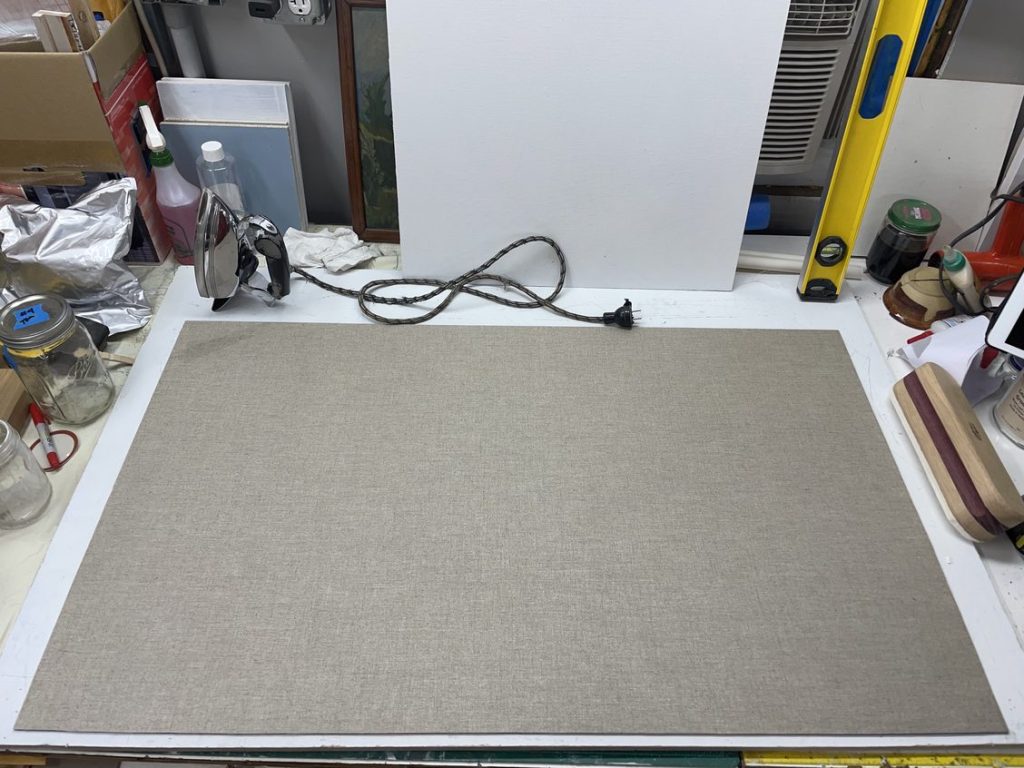
“The choices that artists make of painting materials and techniques have consequences on the longevity of their work. This website is about those choices and how our present understanding of these materials and techniques from conservation research and practice can help artists make better choices.”
Mission of Painting Best Practices (an educational service of Natural Pigments)
Part two of my “Discovering the Craft” discusses another wonderful source that focuses on the inner workings of oil painting.
This may come as a surprise, but I was not trained as a painter. My time in undergrad was focused heavily on figure drawing and the classes that satisfied my concentration in printmaking. And while I did take a couple painting classes, they were merely introductory and only allowed the use of acrylic paints. Nowhere really were the discussions of the paint properties, characteristics of pigments, nor was there extended discussion on the practicalities of one’s studio practice: the ins and outs of substrates, brushes, varnishing, etc. And obviously none of it involved oils.
After graduation (January 2005) I got my own place with a spare room for my studio (because that could be done back then), but I was without an etching press to continue my printmaking work. I started working at an art store that October and having the guidance of a mentor and co-workers I decided to bring home some oil paint and canvases…and Boom!, hooked. For a while I proceeded along via some basic research and my own self-tutelage and that was that.
I don’t recall exactly when I started to think more about the best practices for painting, but after of years working in picture framing and fine art reproduction you get to handle a lot of work, both old and new, and often I get to observe the ravages of time, or how they’ve been kept at bay. Working in this kind of retail space you’re also in touch with a variety of artists who are at various levels of expertise. One artist in particular really catapulted my understanding by pointing me in the direction of George O’Hanlon/Tatiana Zaytseva and their company Natural Pigments. Back around 2014-ish a customer and now friend, Matt Miller (who specializes in still life and portraiture) told me about the in-person Painting Best Practices workshop he had attended with George/Tatiana and found the information presented to be exceptional in the breadth and importance. Painting Best Practices is home to the online presence of that workshop.
Including but not limited to oils, PBP presents a wealth of research looking at at the history of all kinds of painting and works to reconcile the old with the new, as assessed by the most up-to-date research possible, and presents it to artists in a comprehensive way, so that they may make the most well-informed decisions possible. As the intro quote states: “The choices that artists make of painting materials and techniques have consequences on the longevity of their work. This website is about those choices and how our present understanding of these materials and techniques from conservation research and practice can help artists make better choices.”
Speaking from personal experience as someone who has interacted with artists for more than 25 years, I can say that no where did I ever hear, let alone learn, about much of what is covered by this site. And the frustrating thing is, many of the insights are FUNDAMENTAL to the longevity to one’s craft!
Particularly relating to oils there are basic things that should have been known and addressed in classes, and as anyone who has been an art student anytime in the last 50 years, these things weren’t taught much. It was more about what was painted, not how…and I think the fads and whims of the art world did a great disservice to painting as a craft. (The use of the word craft is a whole other can of worms that I won’t get into here.)
One thing in particular that I learned is that zinc oxide, as a white pigment and often-used filler in other colors can create a critical weakness within an oil-based paint film. Even today, there are major manufacturers that still use zinc oxide (PW4) in their paints; look at your tube of titanium white…look on the label where it lists the pigments used…PW6 (titanium oxide)…AND PW4 (zinc oxide). See?! Mind blowing. The issue has been known about since 2007, and most artists still don’t know about it, and many manufacturers are still using their old recipes. And that’s just one piece of the vast puzzle that is the craft of oil painting.
For more, in addition to PBP, there is a wonderful blog attached to the Natural Pigments website that has articles advising on all kinds of artists materials (not just oil painting), and is free. Then on Painting Best Practices there are more in depth workshops for a nominal fee, or you can take the full workshop for $450-650. I hope to be able to save up for the full workshop soon, but in the meantime, join me in perusing what is so generously presented for free, and perhaps by a tube or two of paint from Natural Pigments as a show of thanks!
*They are one of the few manufacturers that makes oil paints 100% zinc-free, and they still manufacture lead white, which is the superman of oil paint pigments that keeps the Metropolis of a painting safe and protected.
Thanks for reading!
Next time on Part Three of Discovering the Craft I’ll show you some of the things that I’ve been tinkering with in my own studio…hand-refining oils!
Leave a comment